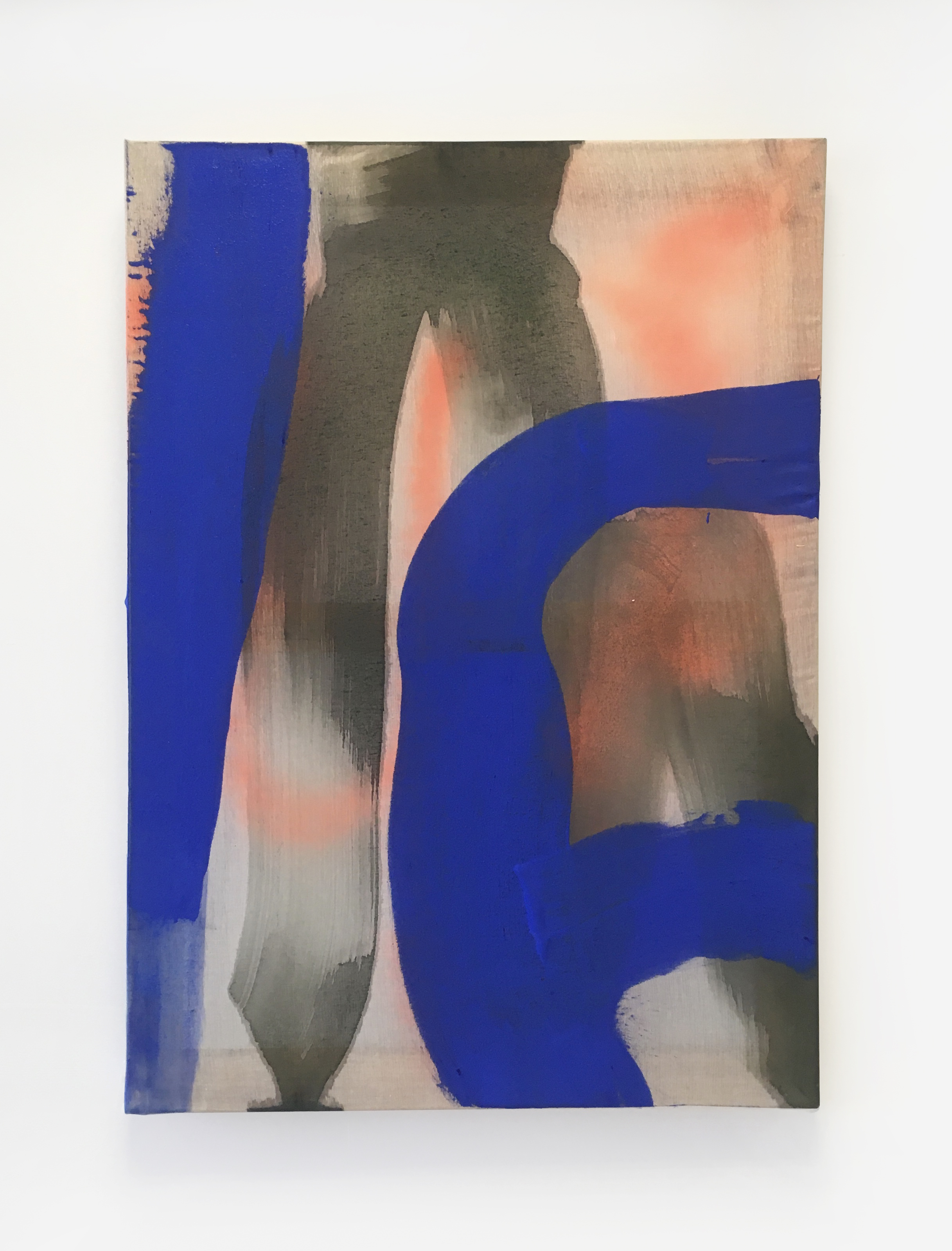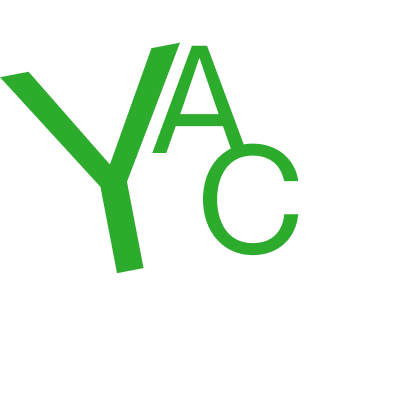Betsy Bradley
Interview by Melanie Pocock
-
Published in November 2021
-
The following interview took place during the development of artist Betsy Bradley’s new solo exhibition of work at Ikon, Birmingham, titled Chasing Rainbows. Betsy spoke with Ikon’s Curator, Melanie Pocock.
-
Feng Shui, 2020, Acrylic on Organza, 110x75cm. Courtesy the artist.
Draped from the ceiling or suspended from wall to wall, your works stretch the boundaries of painting by often taking on an architectural quality. What is the value in occupying this space between painting and sculpture for you? Were there any challenges in creating works in particular dialogue with Ikon’s architecture?
Expanding my painting practice into a sculptural realm means I can work more freely with materials, enabling me to playfully explore its structural possibilities. In my work I don’t necessarily see a distinction between ‘painting’ and ‘sculpture’. I regard it all as an extension of painting, and try to treat my practice as one fluid entity; the paintings can take on sculptural qualities, while the sculptural works embody painterly gesture. I’m interested in how painting might adapt to the space it’s in, becoming a natural part of that environment and in a sense only able to exist there and then. Ikon is the first opportunity I’ve had to really explore this. There weren’t actually too many difficulties - for the majority of the works that respond directly to the architecture, I had an intuitive, almost immediate idea of what they would be - it was like the space was telling me! But there were some challenges with particular structural elements and how to incorporate them with the work, so that they became part of it rather than something to work around. Often the best solution is the most obvious one; not fighting against things allows for a playful authenticity.
 Ultrasonic, 2020, Acrylic on Muslin, 150x110cm. Courtesy the artist.
Ultrasonic, 2020, Acrylic on Muslin, 150x110cm. Courtesy the artist.You’ve previously highlighted the role of chance in your practice, describing painting as a force that traces “the dance between thought and action”; can you elaborate on how your work is concerned with the present moment? And how does this translate to the viewer’s experience of the works?
My process revolves around short, fast outbursts and is quite meditative. I try to make work when my mind feels clear and spacious. I’m not necessarily aiming to make a painting, but tracing the experience of overcoming thought and being in the movement of the body, allowing the paint to embody letting go. It takes on a life of its own, my actions being like the wind blowing it one way or another, materialising these unrepeatable, transient gestures in surprising ways. I hope this playful energy of the paint and materials in my work brings a sense of liberation to the viewer, perhaps taking them outside of the heaviness of thought and inviting them into the present moment. As well as this, there are some immersive, interactive elements of the exhibition which will encourage an immediate physical and mental presence in the space, like the translucent wall partition painting, and floating ‘sky’ work suspended in the smaller gallery.
 Blue Tropic, 2020, Acrylic on Organza, 72 x 56cm. Courtesy the artist.
Blue Tropic, 2020, Acrylic on Organza, 72 x 56cm. Courtesy the artist.Related to the role of chance, your work is inspired by everyday phenomena. How do these fleeting sensations translate visually into your work?
The translucent grounds I work on absorb and reflect paint and light. It is as if colour, which is in nature light, is both dissolved into and emitted from the surface. In places it is like the paint is disappearing and appearing at the same time, emulating the transience of everyday phenomena like a rainbow, or light pollution in the night sky. This might also be translated in not always being able to grasp at a fixed ‘whole’, but letting more subtle elements of the paintings reveal themselves at different times.
Eastern and Western traditions as Wabi Sabi, Arte Povera and Mono-ha have been formative in the development of your style – what bonds these varied influences within your work and is there a painting at Ikon which best demonstrates this blended influence?
I think the combination of a certain resistance to convention, the use of found objects and favouring their ‘imperfections’, and exploring the natural qualities of materials and their physical presence in space bring together these influences. It’s hard to isolate one painting, as I want the work in the exhibition to be experienced as a whole rather than as separate moments. But Kensho is perhaps a good example of the blending of these influences. With voile as its support, it relates to the unconventional and everyday sentiment of Arte Povera, while the Wabi Sabi notion of natural qualities is reflected by the revealing of the stretcher’s wood grain. Mono-ha emphasises unaltered materials and their relationship to space. I see my painted surfaces as spaces in which paint can exist in its most authentic state.
 Kensho, 2020, Acrylic on Voile, 30x21cm. Courtesy the artist.
Kensho, 2020, Acrylic on Voile, 30x21cm. Courtesy the artist.Part of your artistic process relies on repurposing found objects as tools to create with, as well as creating paintings on translucent fabrics like voile and organza - can you discuss the significance of materiality in your work?
I’m fascinated by the way materials can surprise us, often just by being themselves, but used in an unexpected way. I’ve always been materially driven, at first by an infatuation with mark making, then an interest in how paint might behave on different surfaces. Taking cues from my current surroundings, objects then became sculptural painting tools. This intuitive approach has developed into painting becoming a loose form that allows me to playfully subvert its conventions, and explore how the materials themselves drive the work. A dust sheet takes on the ironic role of a canvas, old stretcher bars become handles for painting tools, and the fabric itself takes the form of a fluid painted gesture.
For the first time you are inviting contemporary dancers to respond to your work. Can you talk us through your motivations behind incorporating this live, performative element into the exhibition?
My work is very physical, and I consider painting as a dance between myself, paint, body, mind, thought and action. So it seemed only right to invite dancers to respond in the intuitive way that the work is made. I was interested in how the body and its movements being expressed by the paint might then be transformed back into the body. The idea is for the dancers to be a natural presence in the space, embodying the fluidity of material and painterly gesture throughout the gallery. So they’re not ‘performing’ as such, but exploring their own intuitive reactions, at times pausing for reflection or rest, even stretching and warming up in the space, going with their own natural flow of energy. I wanted to create an opportunity for an open conversation between the body and the work, and a chance for the dancers to enjoy experimenting with movement in a less restricted format. With the only guidelines being to improvise, I’m taking my open-ended process into the realm of performance, leaving room for discovery.

Satori, 2019, Acrylic on muslin, 145x120cm. Courtesy the artist
-
Betsy Bradley: Chasing Rainbows runs at Ikon, Birmingham, 3 December 2021 – 13 February 2022
-
betsy-bradley.co.uk
ikon-gallery.org
-
If you like this why not read our interview with Fernanda Galvão.
-
© YAC | Young Artists in Conversation ALL RIGHTS RESERVED
